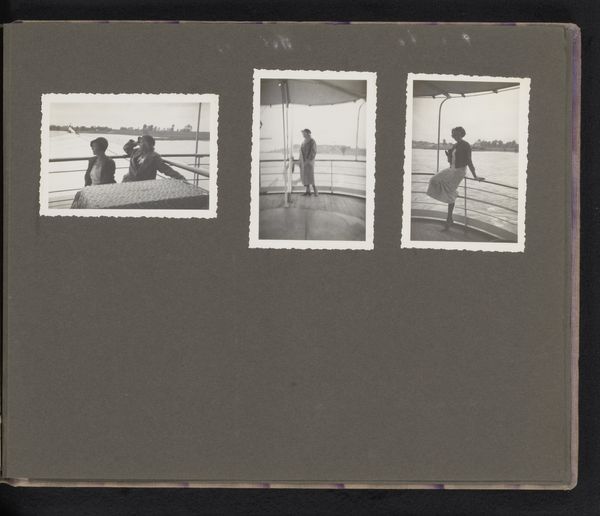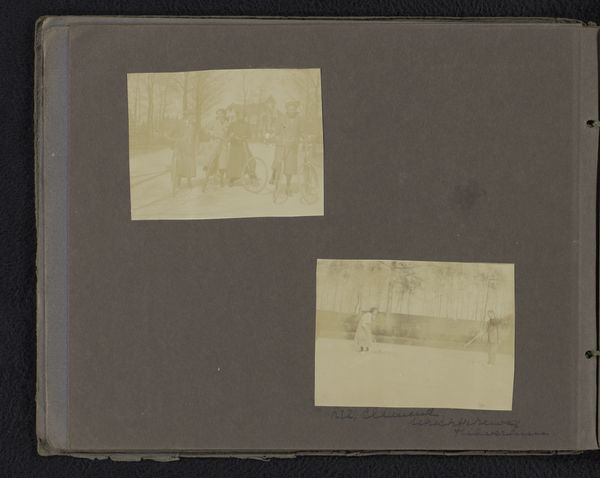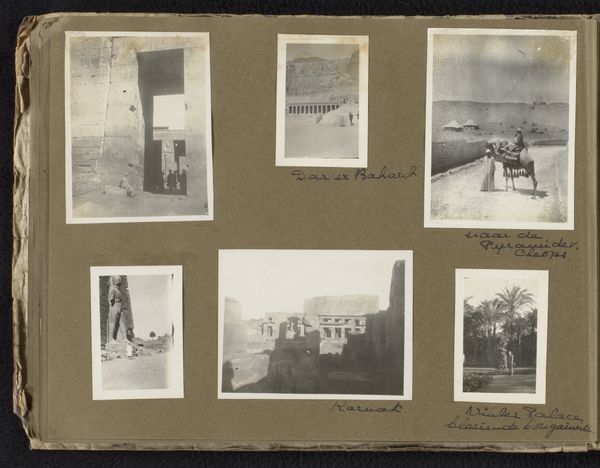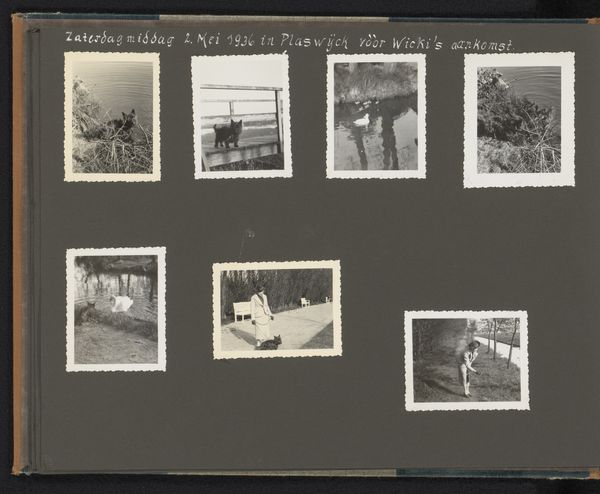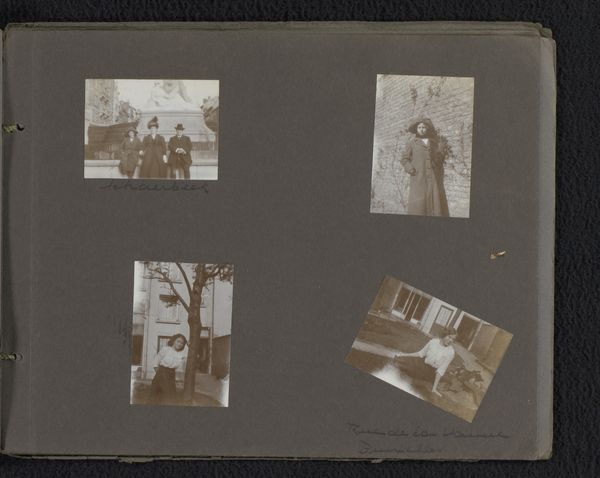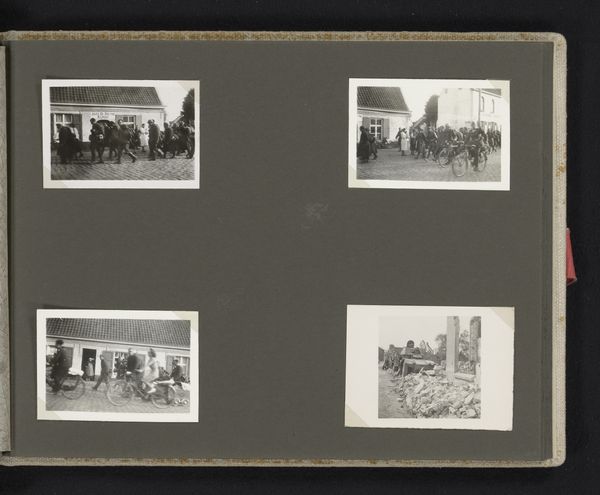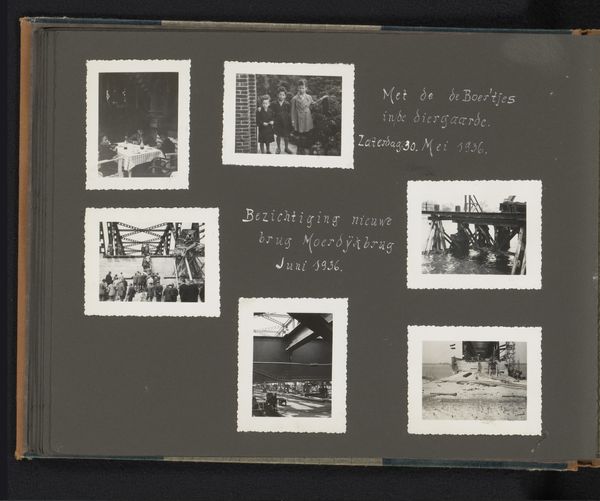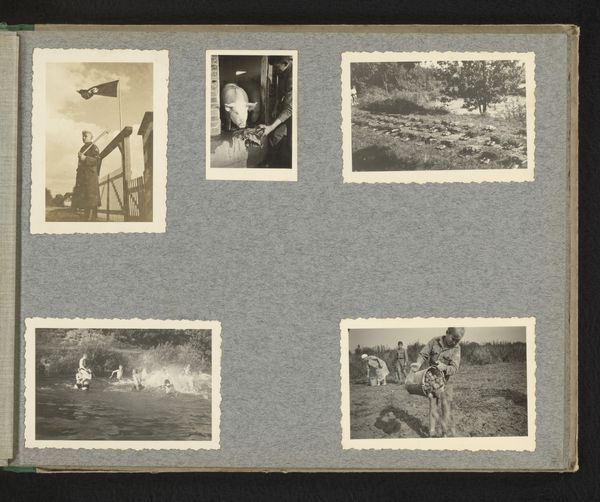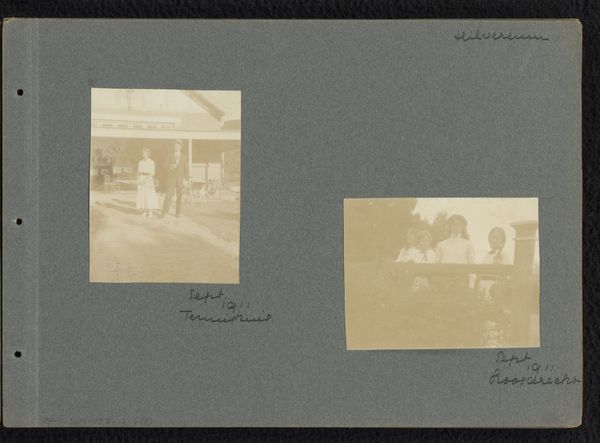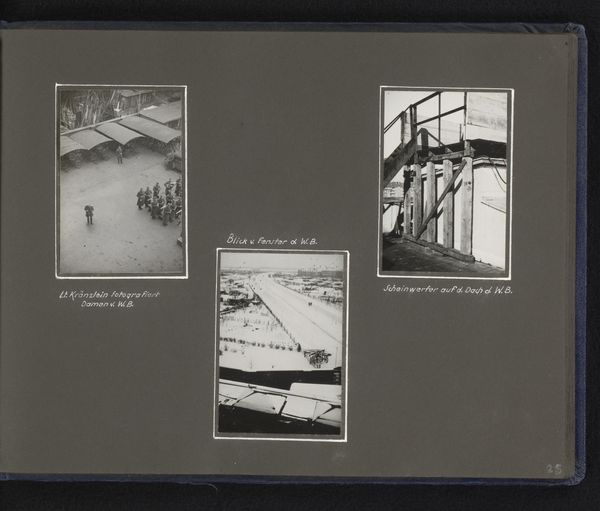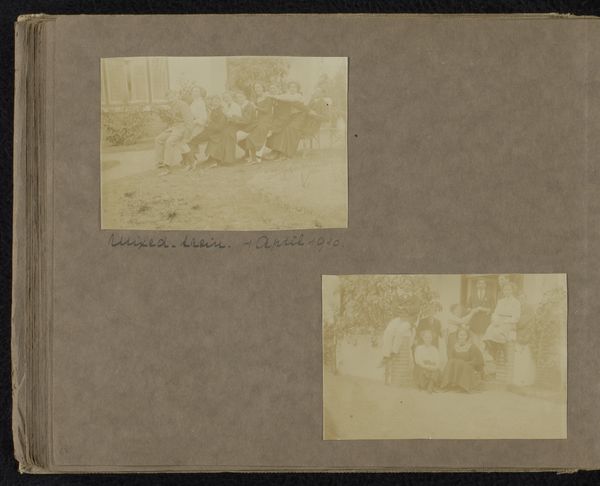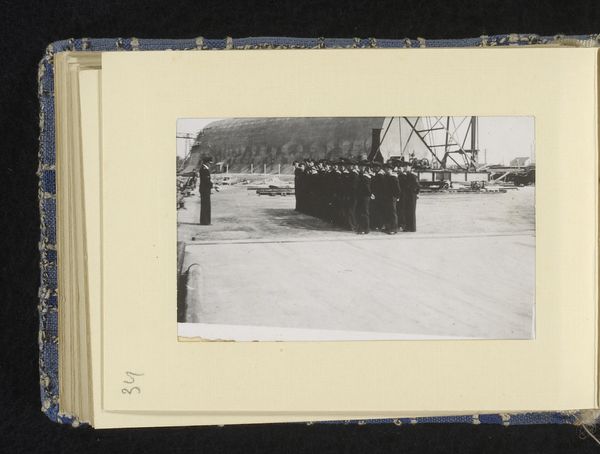
Dimensions: height 60 mm, width 90 mm, height 210 mm, width 290 mm
Copyright: Rijks Museum: Open Domain
Editor: Here we have a collection of gelatin silver prints entitled “Duitse militairen in Scheveningen,” or “German Soldiers in Scheveningen,” made sometime between 1940 and 1945. The candid snapshots feel eerie to me. What do you make of them? Curator: Each image holds the weight of that fraught period. The figures become symbols. Look at the soldier reclining on the bench in one frame. What does it mean to see an occupying force depicted in such a vulnerable, almost casual pose? It disrupts the expected iconography of power and control. Editor: I see what you mean. There's a disjunction between the implied force and the actual, mundane reality. The photo with the soldier on horseback almost feels…staged? Curator: Precisely. And how does that affect the viewer? Consider the horse itself – traditionally a symbol of power and nobility, here potentially a symbol of conquest. But the mundane setting clashes with the expectation of grandiose power. It provokes unsettling questions about complicity, about the everyday face of occupation. What memories or expectations does this collection trigger for you? Editor: I hadn't thought about it that way. The 'everydayness' is what unsettles me the most, now that you mention it. These photographs blur lines – between power and vulnerability, conqueror and conquered. It really humanizes something that you see as just "Germans during WWII," it adds depth. Curator: Exactly! It’s through these disrupted symbols and familiar images that the true psychological weight of history is revealed. Each frame serves as a fragment of cultural memory, a lingering reminder of a complex and unsettling past. Editor: That's really fascinating. I definitely see this in a completely different light now.
Comments
No comments
Be the first to comment and join the conversation on the ultimate creative platform.
